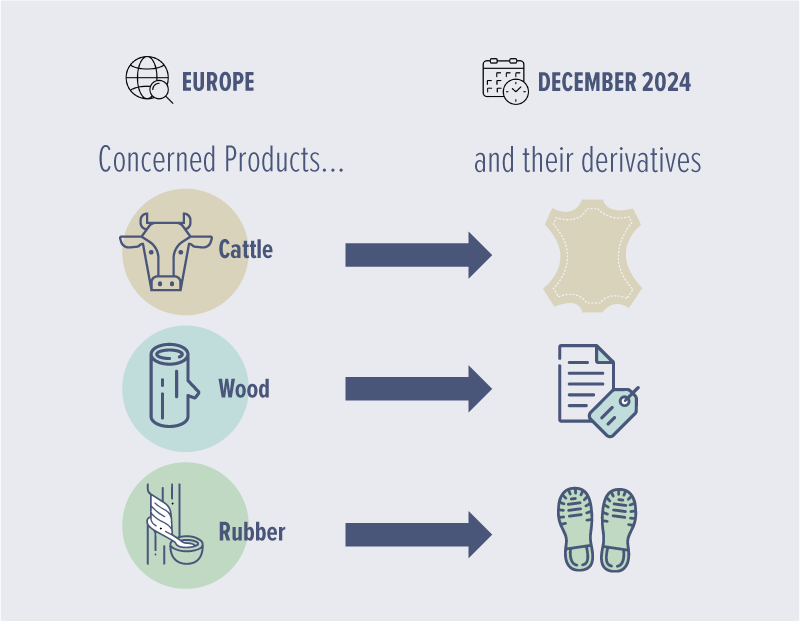Eco-question: European Deforestation-free Regulation–how does Europe combat deforestation? The - Première Vision Paris - Denim Première Vision - Première Vision New York
The European Deforestation-free Regulation (EUDR) came into force in June 2023. This text prohibits the placing on the European market and the export of any product that is a result of deforestation. Its aim is to protect forests, to preserve biodiversity, and to combat climate disruption with a view to zero deforestation.
What are the implications of the European Deforestation-free Regulation
Companies will have to be able to certify that their products have not contributed to deforestation or forest degradation after 31 December 31 2020, in order to be able to market them. Offenders risk immediate withdrawal from the market in the event of non-compliance, and a fine of up to 4% of their annual European sales. The European Deforestation-free Regulation requires the implementation of due diligence procedures to ensure the traceability of supply chains right down to the geolocation of the plot, and to guarantee that the product presents a zero or negligible risk of deforestation.
Read also: Smart Key: What’s behind the seeming “naturalness” of cellulosic materials?

Which criteria are taken into consideration?
Seven commodities identified as drivers of deforestation are concerned, including rubber, cattle and wood. Derived products, including leather, wood pulp products, paper and soles, are also subject to these obligations. The regulation applies equally to products from inside and outside the European Union.
How do you communicate this information?
Each year, producers and marketers will have to publish a due diligence statement sharing the measures taken and data collected to comply with the regulation.
This information must be documented, retained and made available to the competent authorities on request for a period of 5 years.
When will the regulation be rolled out?
A deadline of 18 months has been set for compliance. Large companies must comply by 30 December 2024.
Micro-businesses and SMEs will benefit from an additional 6 months, i.e. June 2025.
Read also: Today’s eco-question: How to ensure viscose doesn’t contribute to deforestation?
How do we get ready for it?
By December 2024 at the latest, the European Commission will publish a low, average or high deforestation risk classification for all producer countries worldwide. This mapping will make it possible to anticipate and implement risk assessment measures. Upstream, companies can already qualify their product categories concerned by the targeted materials, and trace the origin of supplies to benefit from a robust database as soon as possible.
